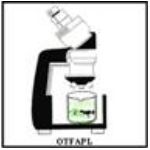ENRM 2003/AGLS 6502 Projects
eCompendium Group Activity
1.About the eCompendium
With the increase of technology in the workplace, the use of programmes and databases for data entry and information retrieval is becoming more prevalent. This project will not only help you learn more about neo-tropical animals, their biology and conservation, but give you experience in eTools which can prove to a valuable asset to your future clients and/or employers.
Most importantly, the takeaway from this exercise is for you to have an idea of what is known, not known, and what is the most interesting feature for the species assigned to your group.
back to top2.Instructions
This group activity will comprise of the following steps:
1. Familiarise yourself with your assigned species using factsheets and if available, production modelling worksheets, which were part of projects for previous classes. Links to the files' location can be found in Table 1 below.
In the event you would like to have a look at the blank template for the factsheet and production modelling worksheet of past years' projects, please click here.
2. Filling out the Word database-entry template (link below), condense and ratify the content from the factsheets ensuring that information and references are cross-checked and factual. Ideally each factor should comprise of 2 to 3 sentences of high quality information, accompanied by 3 photographs and their references which can give someone unfamiliar with your species a good overview.
If during your research, you realise that information in the factsheet/production modelling worksheet from the Google Drive may not be 100% correct, or your group has found a better source/quality of information, please indicate this using track changes on the factsheet/worksheet. This allows me to see your research skills in action, which will work in your group's favour during marking.
For any original photos, information and videos your group submits, remember to reference both yourselves and your sources with name/s, date and location so that you all can be credited properly should the information be re-used. Remember, this is your contribution to science!
3. Your group will be required to enter information from the template into the PHP web application called the eCompendium over the course of 3 sessions as outlined below.
- Data entry session 1: questions 1 to 3
- Data entry session 2: questions 4 to 6
- Data entry session 3: questions 7 to 9
A short survey on use of the web application will ensue after each session. Please be sure to take mental notes, as during your final presentation, the additional question will touch on your experience using eTools.
4. The eCompendium will be up and running soon for testing.
back to top3.Link to Word database-entry template
Click the link below to access the template.
Database-entry template (MS Word)
back to top4.Links to factsheets/worksheets
Table 1
